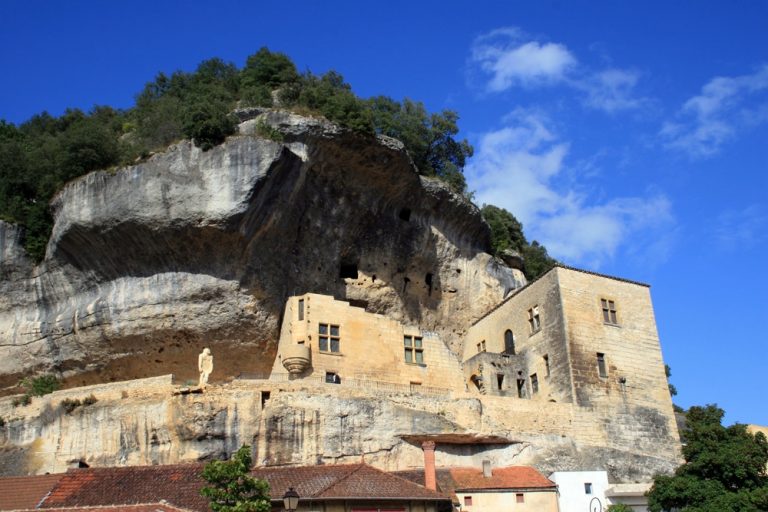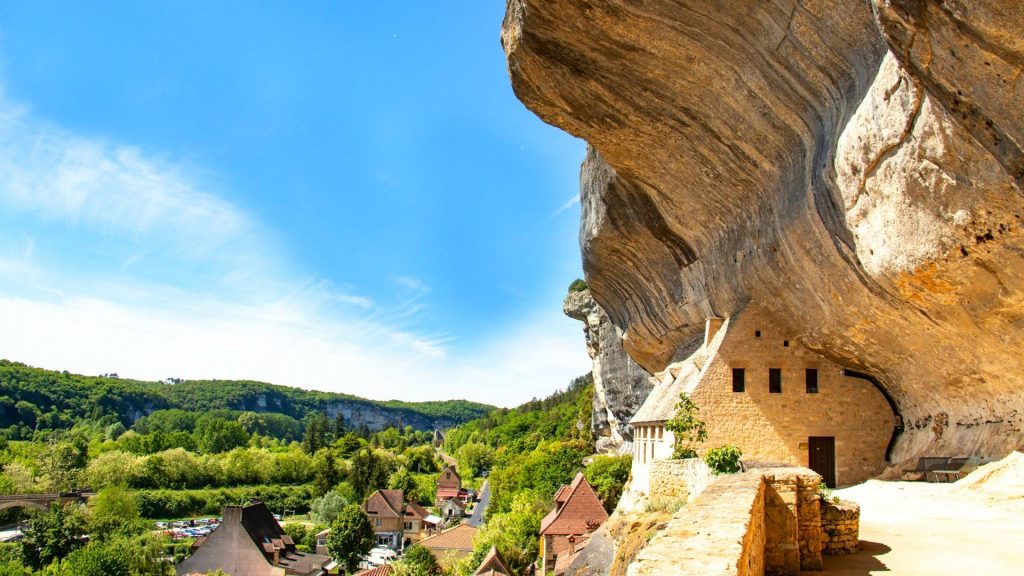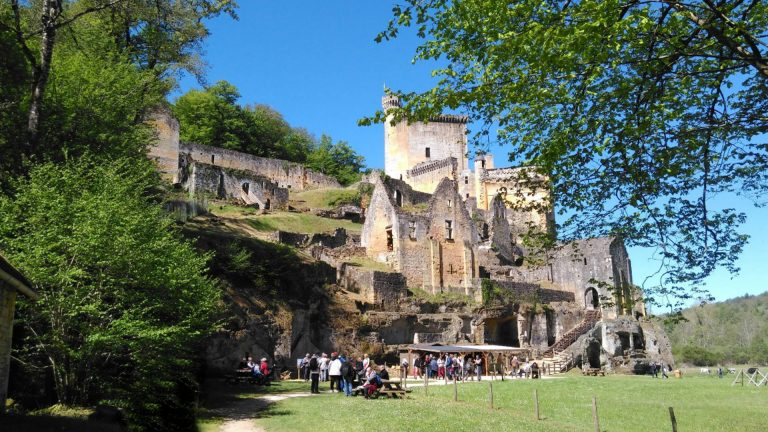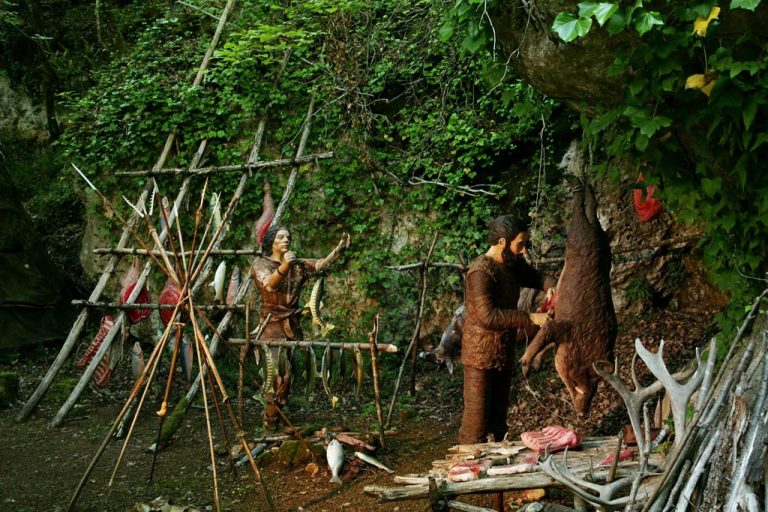Les Eyzies
Les Eyzies is the world capital of prehistory in the Dordogne.
Visitors flock to this peaceful village in the heart of the Vézère valley in the South West of France to discover its various caves, such as those at Lascaux, and prehistoric sites, including the Font-de-Gaume cave, the Roc de Gazelle caves and the prehistoric Sorcier cave.
The discovery is all the more exciting as these iconic places come one after the other in an impressive setting of cliffs, and the village and its surroundings are conducive to many outdoor activities.
Stay at Les Eyzies campsite in the Dordogne, voted one of the most beautiful villages in France and take the opportunity to discover the village and its prehistoric caves.
Where is Les Eyzies?
Les Eyzies is located in the heart of the Périgord Noir, a leading holiday destination in the Dordogne.
Known in particular for its caves and prehistoric sites, the village attracts history buffs and nature lovers alike.
This charming medieval town in the heart of the Vézère valley is also a starting point or stopover for exploring other destinations that are at least as well known, such as Limeuil or Saint-Cyprien, but also Beynac, Castelnaud, La Roque-Gageac, Domme or Sarlat-la-Canéda.
Les Eyzies: world capital of prehistory
The international reputation of Les Eyzies-de-Tayac is due to the record number and density of prehistoric sites in its territory.
The shelters, deposits and decorated caves of the Vézère valley, in and around the commune of Les Eyzies, are archaeological sites of unique scientific value and still represent important research sites for palaeontology and anthropology.
In Les Eyzies, you can visit the amazing Font-de-Gaume and Combarelles caves, which are on the UNESCO World Heritage List, as well as the prehistoric sites of Le Moustier, La Micoque, La Ferrassie and Laugerie Haute, as well as the Poisson and Cap Blanc shelters, famous for their carvings depicting animals.
The territory of Les Eyzies is the place where Homo sapiens fossils were discovered, grouped together under the famous name of Cro-Magnon, in reference to the rock shelter that housed them.
22 km from Sarlat-la-Canéda and 24 km from Montignac-Lascaux, the world capital of prehistory is home to the National Museum of Prehistory, a place of research, outreach and conservation housed in the village’s old castle on the cliffside.
On its upper terrace, facing the Vézère, stands the silhouette of Paul Dardé’s statue “L’Homme Primitif”, now an emblem of the village. Are you in love with prehistory? Learn more about the prehistoric caves in the Dordogne.
What to do in Les Eyzies?
- The National Museum of Prehistory, 1500 m2 of museography to discover in an exceptional site clinging to the cliffside above the village and the Vézère.
- The Combarelles cave is decorated with several hundred Magdalenian engravings representing mammoths, horses, ibex, reindeer, woolly rhinoceroses, bears and felines.
- The castle of Commarque, a sublime medieval site consisting of a fortified castle perched on the rock and troglodyte dwellings.
- The Vézère: several canoeing and kayaking centres are located in Le Eyzies and offer trips through the most beautiful landscapes of the Vézère valley. Paddleboard hire is also available.
- The Roc de Cazelle park: in rock shelters, on rocky terraces and on a farm, this family park presents numerous reconstructions of prehistoric scenes, as well as workshops on painting, shooting, flint knapping and fire lighting.
- The Cro-Magnon shelter: a recent interactive and fun museum set up on the Cro-Magnon human discovery site.
- The Grand Roc cave: a magnificent concretion cave also called the “mineral forest”, halfway up the cliff above the Vézère.
- Hiking loops: The village of Les Eyzies is the starting point for several hiking loops, in the footsteps of prehistoric humans, in the undergrowth or to discover the hamlets.
- The Font-de-Gaume cave: a must-see in the Vézère valley, one of the most beautiful decorated caves with its sublime polychrome paintings of aurochs, mammoths, lions and wolves.
- The shelters of Laugerie basse: a cliff occupied by humans since the Magdalenian period, to be visited today with the help of an interactive tablet.






